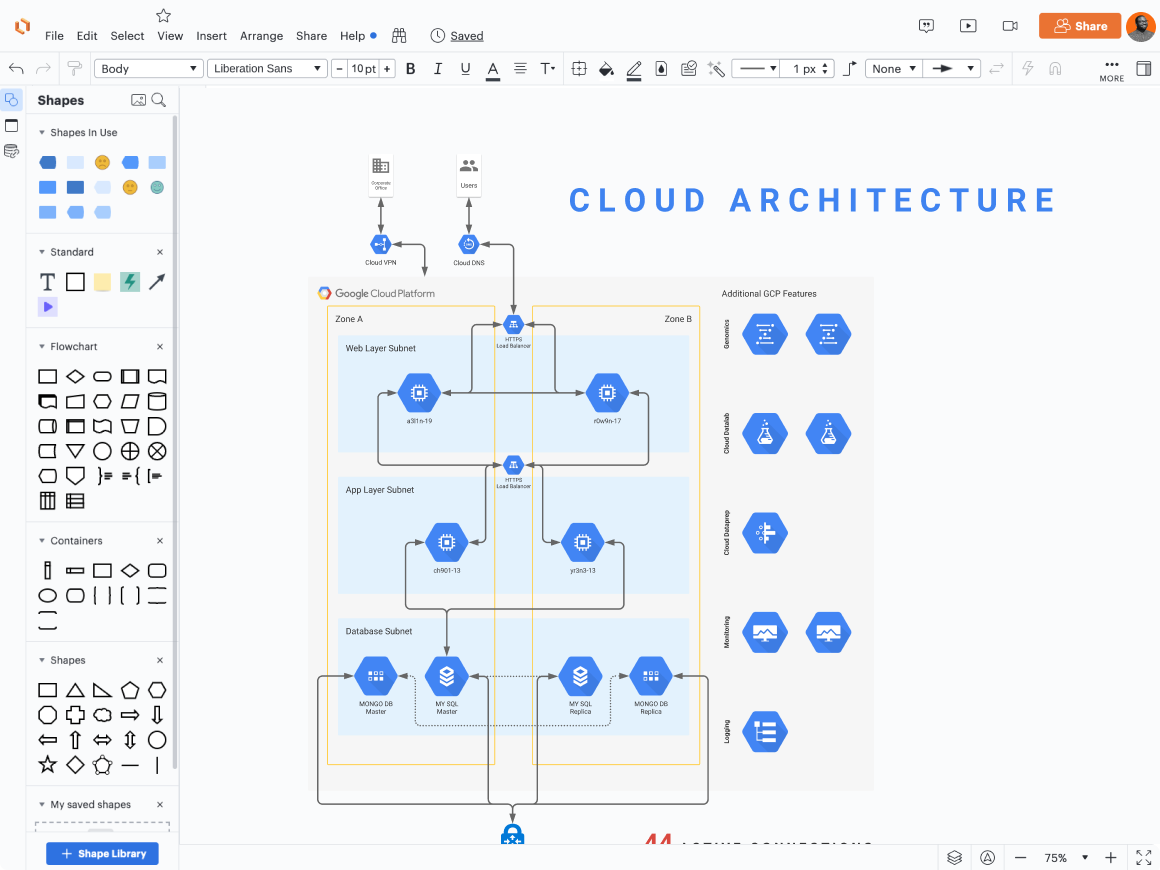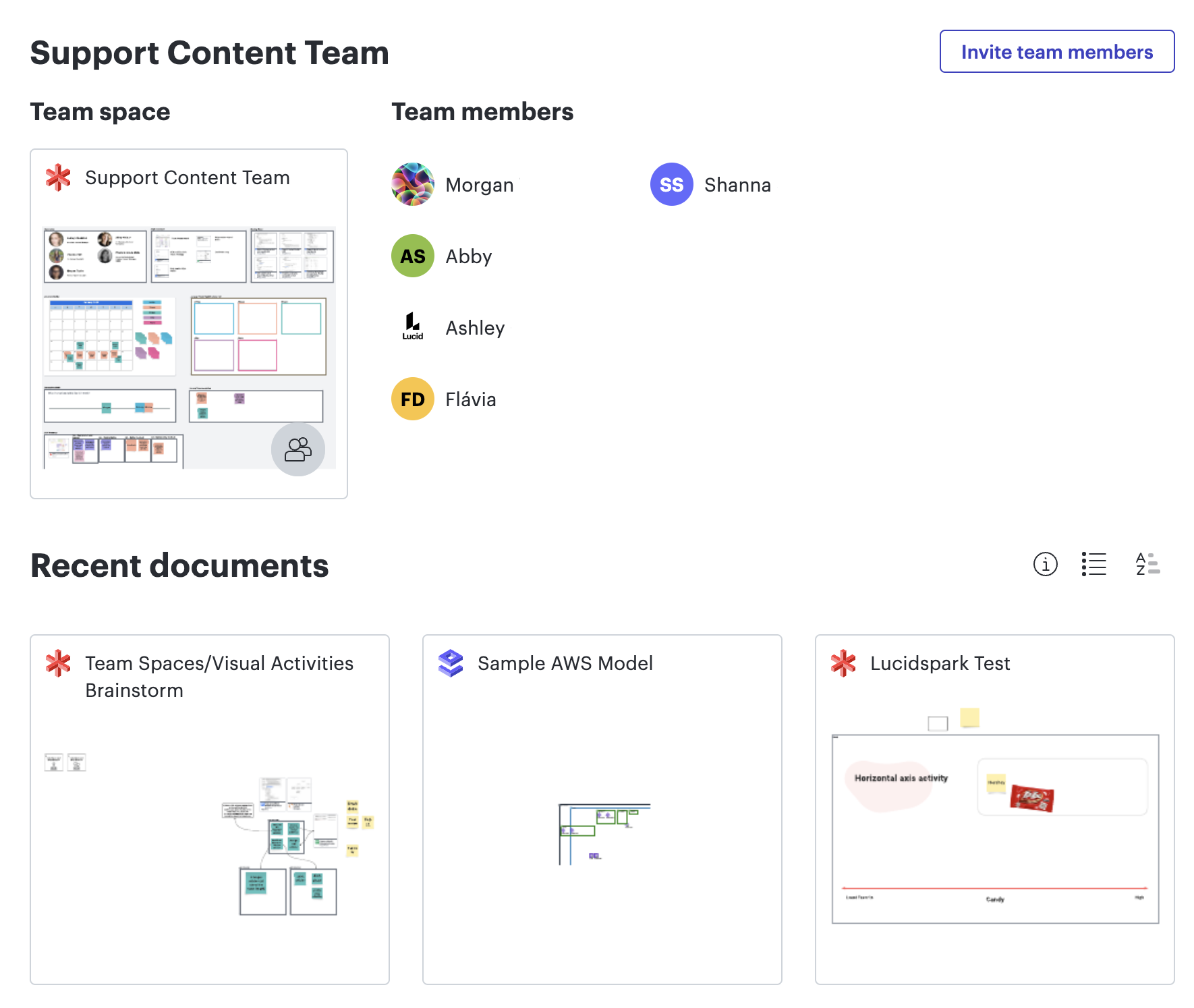
Why CIOs should use visuals during cloud migration
David Torgerson
Reading time: about 3 min
Topics:
Many organizations view cloud migration as a painstaking process, or even a roadblock, instead of an opportunity to uplevel the organization. It’s the CIO’s job to paint the picture for their teams of why cloud migrations are so impactful and desirable.
The benefits of the cloud are widely known, but we don’t talk enough about the transformative effect a cloud migration has on company culture and team mindsets. Without this insight, teams can feel frustrated and overwhelmed instead of excited by the change.
CIOs may struggle to communicate the vision and benefits of cloud migration to their teams when using static or text-heavy documentation. Plus, the process of actually moving to the cloud is complex. With visuals, CIOs can communicate everything from the vision and plan to the technical requirements. Visualization, in other words, provides cloud migration teams with a more effective platform for collaboration.
Ushering in a new cloud paradigm
Paradigmatic changes arising from digital transformation can be intimidating because of their scope and impact. Whenever new tools, processes, or ideas enter the organization, you’re bound to encounter some resistance. Your team is undergoing massive change, and it’s important to acknowledge that fact. Consider, for instance, the differences between traditional and cloud environments:
- Infrastructure: Every detail is mapped in a traditional environment using static documentation and diagrams. When working in the cloud, real-time data and up-to-date visualizations are the new norm.
- Ongoing maintenance: In a traditional on-prem environment with thousands of cables, routine maintenance is difficult. In cloud environments, maintenance turns into a series of easily managed but still complex API commands and GUI adjustments.
- Ephemeral systems: Unlike a physical data center that employees can see, cloud environments are virtual. Without visuals, such as infrastructure diagrams, it is left to individuals to imagine what the environment looks like. This often results in confusion due to the drastically different perspectives of each individual.
Since each cloud migration marks a distinctive departure from your previous technology, your teams face a steep learning curve. While some aspects of the cloud may scare or frustrate your teams, these negative responses will be much more likely if your teams lack visibility.

How cloud visualization helps build trust with your teams
As we know, a picture is worth a thousand words. As you move from the old into the new, having a visual representation of what your new infrastructure or technology will look like reduces uncertainty during your migration and builds trust among your team.
Your new cloud environment might not have ten thousand cables for your team to maintain, but you still need highly technical people who understand how traffic logically flows through your systems. There are security groups, firewalls, serverless infrastructure, containers, and servers that someone has to manage.

If you have to sell your organization on DevOps, a technology cloud migration, or another seismic paradigm shift related to technology, be prepared to use clear visuals and give your team adequate context for conversation.
To provide these visuals and context, consider using a visual collaboration solution to facilitate your cloud migration project. Visual collaboration can help:
- Foster cross-functional collaboration for defining business objectives, scope, and prioritization.
- Swiftly generate visual representations of existing infrastructure and develop and refine future strategies.
- Establish, update, and distribute comprehensive system documentation to secure stakeholder support.
- Verify the deployment of the architecture to minimize risk and avoid unnecessary expenses.

Why you should use cloud visualization to improve alignment
Visual collaboration solutions allow you to use visuals to help build your team’s understanding. These applications help to explain the big picture and keep your IT teams aligned with the cloud migration strategy while simultaneously understanding their unique position in the project.
Accepting new ways of thinking is hard. With the right applications, you can make change less intimidating and illuminate the way forward for everyone involved. Using visuals to communicate complex ideas and topics with teams supports collaboration, transparency, and visibility—and builds on organizational strengths to navigate this transformative shift.

The IT team’s toolkit for effortless documentation
Creating effective documentation is a real possibility with Lucid. This toolkit has 16 templates for IT teams looking to get started.
Check it outAbout the author

David Torgerson is currently the VP of infrastructure and IT at Lucid. David has more than 20 years of experience working with and leading infrastructure, security, network, ops, and DevOps teams.
About Lucid
Lucid Software is the leader in visual collaboration and work acceleration, helping teams see and build the future by turning ideas into reality. Its products include the Lucid Visual Collaboration Suite (Lucidchart and Lucidspark) and airfocus. The Lucid Visual Collaboration Suite, combined with powerful accelerators for business agility, cloud, and process transformation, empowers organizations to streamline work, foster alignment, and drive business transformation at scale. airfocus, an AI-powered product management and roadmapping platform, extends these capabilities by helping teams prioritize work, define product strategy, and align execution with business goals. The most used work acceleration platform by the Fortune 500, Lucid's solutions are trusted by more than 100 million users across enterprises worldwide, including Google, GE, and NBC Universal. Lucid partners with leaders such as Google, Atlassian, and Microsoft, and has received numerous awards for its products, growth, and workplace culture.
Related articles
[Guide] Cloud cost optimization strategies to increase visibility and alignment
Uncover the necessary—but often overlooked—strategies to gain complete cloud visibility, reach alignment, and reduce cloud costs.
Level up your cloud migration strategy with Lucid
In this blog post, we will explore how to level up your cloud migration strategy with Lucid.
The IT team’s toolkit for effortless documentation
Get over 15 templates to document systems, processes, and projects—without the hassle.
6 ways to use Lucid for your organization’s cloud initiatives (with real-world examples)
Check out the top ways Lucid has helped organizations accomplish their cloud initiatives.
